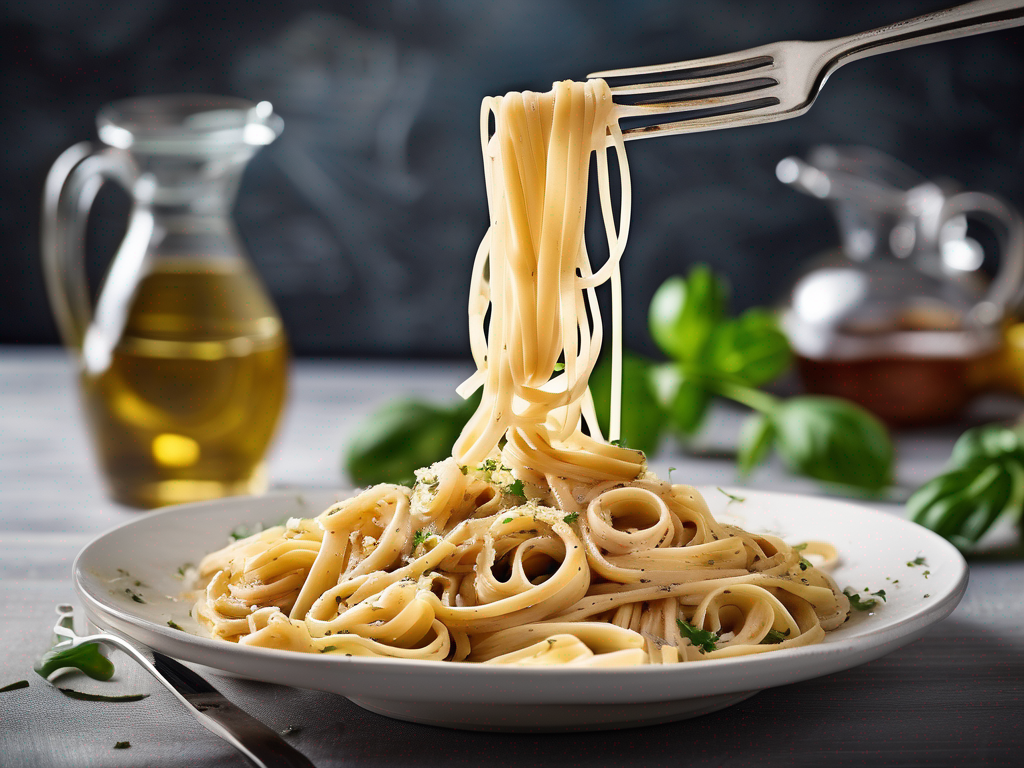
Keeping Your Cooked Linguini Leftovers Mold-Free
Get Your Free Food Safety Cheat Sheet
30 most common foods with instant answers. Print it and stick it on your fridge—completely free!
Keeping Your Cooked Linguini Leftovers Mold-Free
When it comes to storing cooked linguini leftovers, preventing mold growth is crucial for maintaining food safety and quality. Mold can develop on cooked pasta if not stored properly, leading to potential health risks. In this blog post, we will discuss effective ways to prevent mold growth on cooked linguini leftovers, ensuring that your meals remain safe and delicious. (Cooked linguini leftovers)
Understanding Mold Growth on Cooked Linguini
Mold is a type of fungus that thrives in warm, moist environments, making cooked pasta an ideal breeding ground. When linguini is not stored correctly, mold spores present in the air can land on the food, leading to visible mold growth over time. Mold not only affects the taste and texture of the pasta but can also produce harmful mycotoxins that pose health risks when consumed.
Factors that Contribute to Mold Growth
Several factors can contribute to mold growth on cooked linguini leftovers, including:
- Moisture: Excess moisture in the storage container or pasta itself creates an environment conducive to mold growth.
- Temperature: Warm temperatures promote mold development, so storing linguini at room temperature can accelerate spoilage.
- Air Exposure: Allowing cooked pasta to be exposed to air provides a pathway for mold spores to settle and multiply.
- Contaminated Utensils: Using contaminated utensils or storage containers can introduce mold spores to the pasta.
Tips for Preventing Mold on Cooked Linguini Leftovers
To keep your cooked linguini leftovers fresh and mold-free, follow these practical tips:
1. Proper Storage
- Refrigerate Promptly: Store cooked linguini in airtight containers and refrigerate it within two hours of cooking to slow down mold growth.
- Use Clear Containers: Clear containers allow you to inspect the pasta easily for any signs of mold before consumption.
- Avoid Room Temperature: Never leave cooked linguini at room temperature for extended periods, as this promotes mold development.
2. Optimal Conditions
- Maintain Refrigerator Temperature: Keep your refrigerator at or below 40°F (4°C) to inhibit mold growth on stored linguini.
- Control Humidity: Adjust the humidity levels in your refrigerator to prevent excess moisture buildup that can lead to mold.
- Store in the Right Zone: Place cooked linguini in the refrigerator's main compartment rather than the door to maintain a consistent temperature.
3. Handling and Reheating
- Use Clean Utensils: Always use clean utensils and hands when handling cooked linguini to prevent introducing contaminants.
- Reheat Thoroughly: When reheating linguini leftovers, ensure they reach an internal temperature of 165°F (74°C) to kill any potential mold spores.
4. Inspection and Discard Policy
- Check Before Consuming: Before reheating or consuming cooked linguini leftovers, inspect them for any signs of mold, including discoloration or a musty smell.
- When in Doubt, Throw it Out: If you suspect that mold has developed on the linguini, discard the entire portion to avoid the risk of consuming contaminated food.
Conclusion
Preventing mold growth on cooked linguini leftovers is essential for preserving food safety and quality. By following the tips outlined in this blog post, you can minimize the risk of mold contamination and enjoy your pasta dishes without worry. Remember to store leftovers properly, maintain optimal storage conditions, handle and reheat linguini safely, and always inspect before consuming to ensure a mold-free dining experience.
For more information on food safety and storage tips, visit [cooked linguini leftovers](/food/cooked linguini leftovers). Stay informed, stay safe, and savor every bite of your delicious linguini leftovers! (Cooked linguini leftovers)
Related Posts
Here are some other articles you might find helpful:
Authoritative Food Safety References
These agencies and university labs inform every tip and health precaution we publish.
USDA FoodKeeper – Cold Storage Guidelines
Official refrigerator, freezer, and pantry timelines maintained by the U.S. Department of Agriculture.
Visit USDA FoodKeeperFDA Produce Safety Rule & Grower Guidance
Field-to-fridge handling practices that prevent contamination of fruits, vegetables, and leafy greens.
Visit FDA Produce SafetyCDC Foodborne Illness Prevention Hub
Surveillance-backed guidance on pathogens, symptoms, and steps to reduce foodborne illness risk.
Visit CDC Food SafetyUC Davis Postharvest Technology Center
University research detailing optimal storage atmospheres for produce after harvest.
Visit UC Davis PostharvestPenn State Extension – Home Food Preservation & Safety
Peer-reviewed extension bulletins on safe canning, chilling, and reheating practices.
Visit Penn State ExtensionGet Your Free Food Safety Cheat Sheet
30 most common foods with instant answers. Print it and stick it on your fridge—completely free! Want more? Upgrade to the complete guide with 70+ foods.
Scan your food directly and get instant safety info using our AI-powered camera feature.